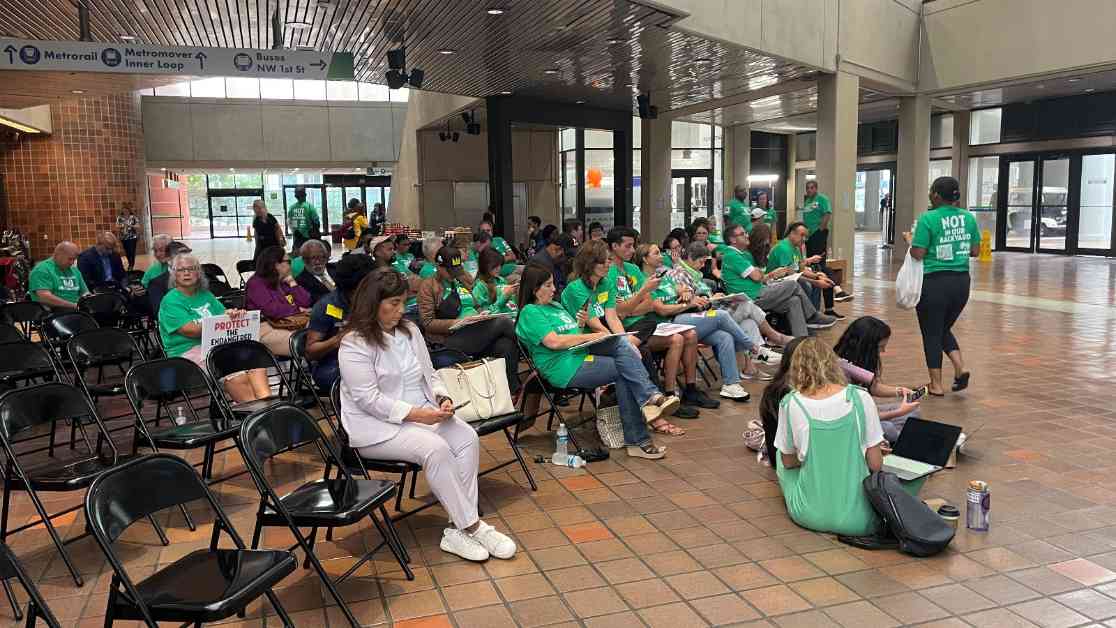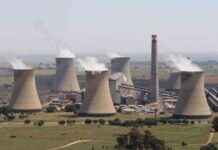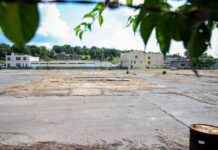Florida’s Largest Trash Incinerator Sparks Controversy: Officials vs. Communities
When leaders of Florida’s most populous county met in September to pick a site for what could become the nation’s largest trash incinerator, so many people went to the government center to protest that overflow seating spilled into the building’s atrium. “MIRAMAR SAYS NO TO INCINERATOR! NOT IN OUR BACKYARD,” read green T-shirts donned by some attendees who wanted to stop the new industrial waste facility — capable of burning up to 4,000 tons of garbage a day — from being built near their homes.
Residents feared the site would not only sink their property values and threaten the environment but also potentially harm people’s health. Even more, the locations appeared to have been selected in a way that worried civil rights and environmental advocacy groups. All four sites considered that day were in or near some of the region’s most diverse communities, and the state is arguing in federal court that race should not be a consideration in permitting industries that pollute the environment. “Historically, communities of color have suffered the impacts of toxic plants near our cities, affecting our health and well-being,” Elisha Moultrie, a 30-year Miramar resident and committee leader with the Miami-Dade NAACP, told the county commissioners. It’s “environmental injustice and racial injustice,” she said.
Miami-Dade leaders see a different challenge: the need to effectively manage trash. The county produces nearly double the national average per person of garbage, in part due to one of the region’s major industries: tourism. Throughout 2024, Miami-Dade’s elected officials delayed a decision on where to build the planned $1.5 billion incinerator, as the county mayor and commissioners wrestled with politics. County leaders are scheduled to vote on a new site in February. “There is no perfect place,” Miami-Dade Mayor Daniella Levine Cava said in a recent memo to county leaders.
### Residents’ Opposition in Miramar
Residents of Miramar, Florida, gathered in Miami on September 17 to voice their opposition to Miami-Dade County’s plan to build a trash incinerator capable of burning up to 4,000 tons of garbage a day near their community. Daniel Chang / KFF Health News
### Environmental Justice Concerns
The conundrum unfolding in South Florida is indicative of what some see as a broader trend in the national fight for environmental justice, which calls for a clean and healthy environment for all, including low-wealth and minority communities. Too often land inhabited by Black and Hispanic people is unfairly overburdened with air pollution and other emissions from trash incinerators, chemical plants, and oil refineries that harm their health, said Mike Ewall, director of Energy Justice Network, a nonprofit that advocates for clean energy and maps municipal solid waste incinerators.
### Health Implications
Before Miami-Dade County’s old trash incinerator burned down in February 2023, the county sent nearly half of its waste to the facility. Now, the county is burying much of its trash in a local landfill or trucking it to a central Florida facility — an unsustainable solution. Joe Kilsheimer, executive director of the Florida Waste-to-Energy Coalition, a nonprofit that advocates for owners and operators of trash incinerators, acknowledges that choosing a location is hard. Companies decide based on industry-accepted parameters, he said, and local governments must identify strategies to manage waste in ways that are both safe and efficient.
### Political and Environmental Impact
Florida burns more trash than any other state, and at least three counties besides Miami-Dade are considering plans to build new facilities. Managing the politics of where to place the incinerator has especially been a challenge for Miami-Dade’s elected officials. In late November, commissioners in South Florida considered rebuilding the incinerator where it had been for nearly 40 years — in Doral, a predominantly Hispanic community that also is home to Trump National Doral, a golf resort owned by the president-elect less than 3 miles from the old site. But facing new opposition from the Trump family, the county mayor requested delaying a vote scheduled for December 3.














